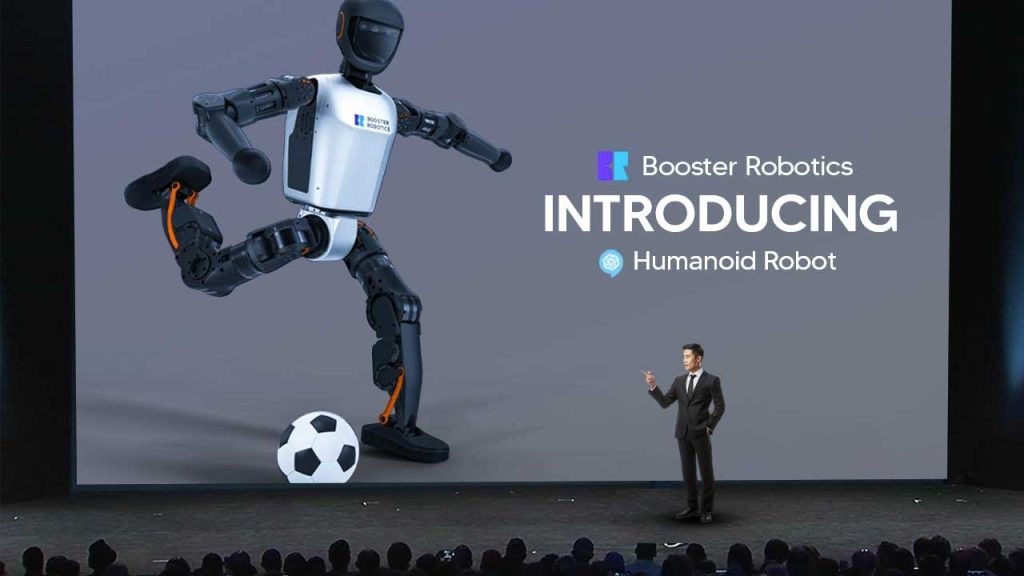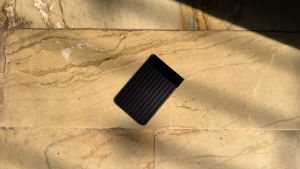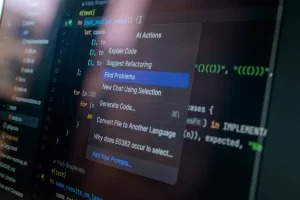Exploring the Cutting-Edge Capabilities of Booster Robotics’ Humanoid T1

When you think of robots, you might imagine towering machines. Yet, the Booster T1 shocks with its tiny 1.2-meter frame.
Weighing in at just 30 kg, it’s hard to believe this humanoid robot is packed with some serious tech. Today we dive into its capabilities.
A Closer Look at Booster T1’s Design
Booster T1 isn’t your average robot. Designed by Booster Robotics in Beijing, it boasts not just a sleek small size, but advanced motion control too. This robot doesn’t just move; it performs actions like walking, playing soccer, and even Kung Fu. It’s a compact powerhouse with big capabilities.
Remarkable Motion Control
One of Booster T1’s standout features is its flexible movements. This gadget is not just limited to simple tasks. It can perform lateral and vertical splits and even complete a bewildering 360° joint rotation! Such flexibility allows it to mimic human-like movements with ease. Quite impressive for its size!
Though it might be tiny, the T1 is no pushover. It can handle 15 newton-seconds of force without falling. Think of a gentle shove or light bump; this bot withstands it and regains balance effortlessly. Its durable shell protects it from falls and knocks, making it an ideal candidate for testing and development.
Open Source Innovation Platform
Booster T1 is a game changer. Its open-source design invites developers from all over to experiment and innovate. Unlike other robots which are exclusive, the T1 breaks barriers. Developers can test, tweak, and explore various applications, driving forward the evolution of robotics.
The vast price difference makes T1 accessible. Unlike expensive robots like the 1X Neo platform, Booster T1 is affordable. University students and developers alike can utilize it, diving into research areas they might once have considered out of reach. It’s a platform for boundless creativity.
Though many focus on making larger robots, Booster Robotics bets on size. Its small stature makes it portable, fitting easily into travel bags. Carry it anywhere, and watch it fold up to squeeze into tight spaces. Its adaptability broadens its potential research uses.
Rapid Development and Capabilities
Appearing first at the World Robotics Conference in 2024, Booster T1 wowed attendees. It quickly showcased its skills, dodging and interacting with larger robots. Its agility is a testament to its innovative design.
Football isn’t an easy feat for a robot. Yet, T1 impressively navigates the complex task of playing it. Watching it run, dodge, and strike with precision mirrors real life athletes. Booster Robotics captured this in a playful video, showcasing T1’s fun, playful side.
The robot’s flexibility in understanding different scenarios is impressive. AI is pushing robotics forward, and T1 has adapted swiftly. It adapts and learns fast, proving it’s not just about rigid programming but evolving AI capabilities too.
Commercial and Development Opportunities
Booster Robotics is paving the way with commercial orders set for this year. The T1 will be mass-produced, bringing its capabilities to a wider audience. Little wonder, then, that a fresh round of financing is underway.
Under the leadership of CEO Hao Chen, Booster focuses on creating a universal robot. T1 isn’t just a gadget; it’s a bipedal, operational control marvel. Developers using Booster tools can now train robots for varied tasks, heralding a new era of robotic versatility.
Overcoming Challenges in Robotics
The choice to focus on bipedal movements is strategic. Many robots are wheel-based, but Booster bets on legs. Imagine opening a door; the agility required is immense. Booster believes bipedal movement can adapt to scenarios others can’t.
Football, chosen by Booster, is a tough test. The sport requires intelligence and quick thinking, skills T1 showcases beautifully. Its ability to generalize and navigate diverse scenes sets it apart from its peers. This adaptability is crucial for real-world applications.
Booster T1 is creatively tackling unique challenges. The focus isn’t just on complex tasks but on simple interactions too. In handling a ball, T1 shows precision and balance. It’s quick and robust, traits essential for navigating the unpredictable human world.
Innovations and Impressive Feats
A curious fact: the T1 borrows from Boston Dynamics. The way it stands, the way it moves echoes the strides made by those giants.
Rapid innovation means competitors should watch out. Booster has managed to mirror these complex movements in less time. It’s proof that advancements aren’t just about expensive labs but smart, agile teams making quantum leaps.
Tech revolutions often appear in unexpected places, and Booster Robotics is proving that true. They’re matching strides of industry leaders in seemingly impossible challenges. Their approach shows ingenuity over mere financial power.
Future Impact and Potential
As AI continues its march, Booster T1 stands at the forefront of robotics. It demonstrates that innovation isn’t just about size or cost but how worlds collide.
Booster’s strategies align with societal needs for versatile robots. They’re not locked in old paradigms but continuously adapt. The T1 is setting a bar for what open-source, community-driven initiatives can achieve.
Conclusion
Booster T1 is more than a compact bot. It’s a revolution in the world of robotics. It exemplifies the power of innovation and adaptability.
Booster Robotics has set the stage for a new era with its T1 robot. Small yet mighty, this space is buzzing with potential.








